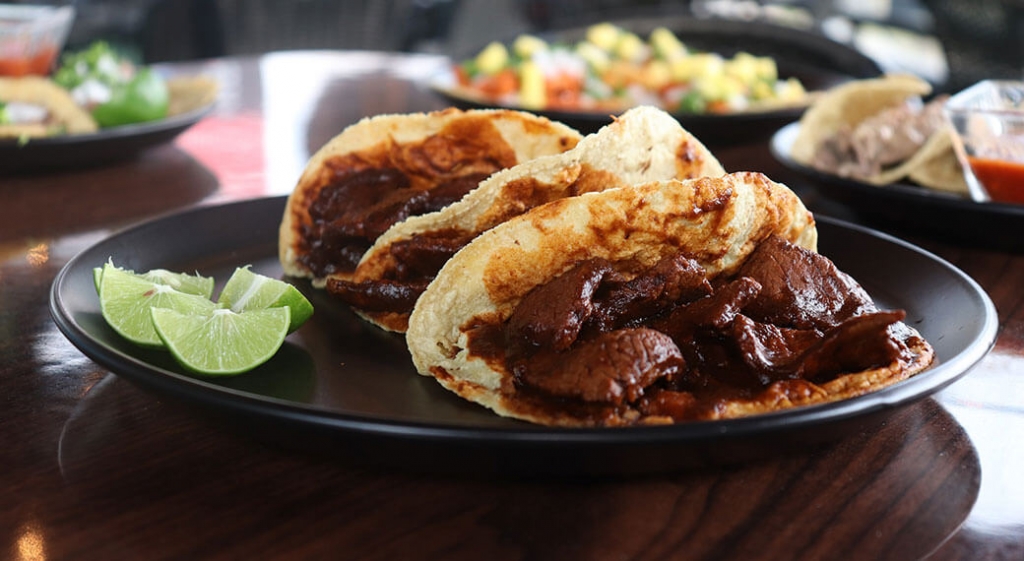When most Americans think of mole, they think of spicy chocolate. However, that is only one piece of a very large puzzle. So, what is mole sauce exactly? Today we will explore mole’s history, varieties, and flavor notes.
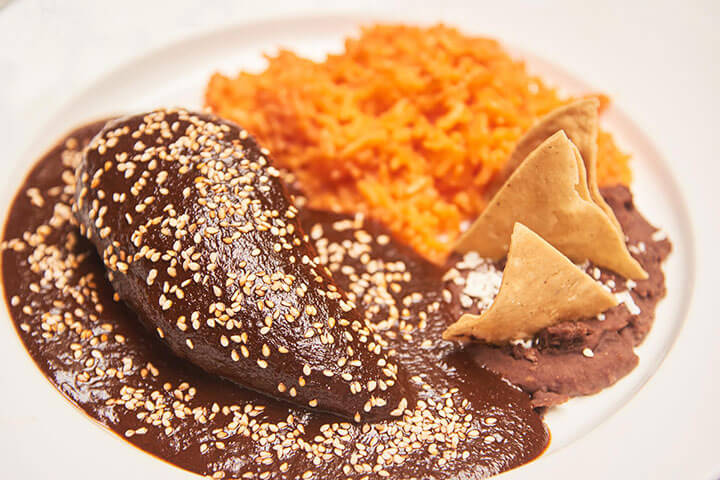
What Is Mole?
Mole (pronounced MOH-lay) is Mexico’s national dish. The word “mole” comes from the Nahuatl word mōlli, which is most easily translated into “sauce”. Mole consists of many moving parts and is a true labor of love. There are often long preparation times involved with roasting and grinding its ingredients. Some moles can take days to prepare.
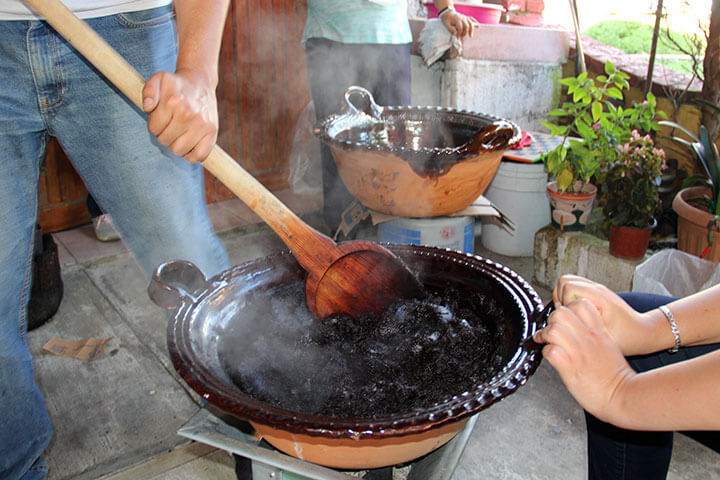
There are as many as 300 varieties of mole, with many kinds using 10-35 ingredients. Colors can range from colors green, black, brown, pink, red, and yellow. Depending on its color, mole sauce can be mistaken for adobo or enchilada sauce because of their similar appearances.
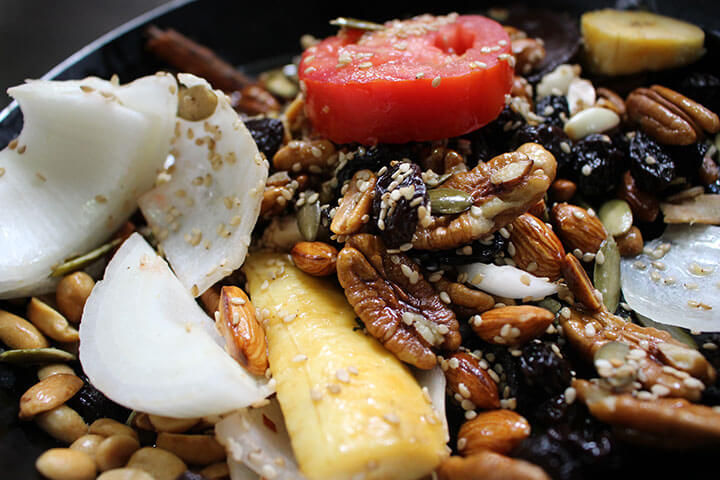
Most moles, if not all of them, are pureed and include dried chili peppers, aromatics, fruit, and thickeners. The most well-known variety in the United States is mole poblano, which is a dark, complex sauce made from bitter chocolate and chili peppers.
Mole is typically served with meat and rice but can be used as a condiment for anything people choose, similar to hot sauce. It is a sauce very near and dear to families in Mexico, especially when that experience is shared.
7 Trending Craft Beers (and the Glassware They Need) »
Who Invented Mole?
Mole’s origin story is shrouded with intrigue and debate. Some say it was created by nuns from a convent in Puebla. Others claim the Aztecs served it to a Spanish conquistador. What we do know for sure is mole has been around for a very long time and has pre-Hispanic roots in what is now known as Mexico.
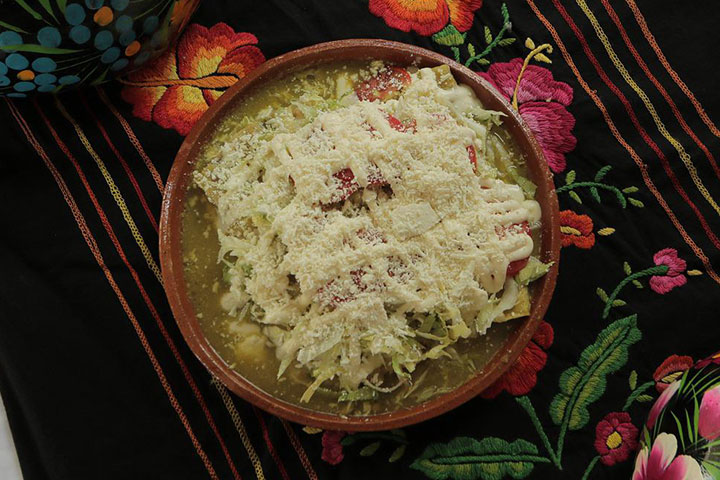
Different Types of Mole
Somewhat similar to curry, mole is more of a concept or family of dishes rather than a specific dish. In fact, mole in Mexico doesn’t just vary region-to-region or state-to-state. Instead, it varies village-to-village. If you were to go on a mole food adventure through Mexico, the options and discoveries are seemingly endless. The Mexican states best known for their mole, however, are Oaxaca and Puebla.
Here is a short list of mole varieties as well as some notable ingredients:
- Mole Poblano/Rojo – dried chili, bitter chocolate, ancho chili peppers
- Mole Negro – chocolate, cloves, cinnamon, cumin
- Mole Amarillo – yellow chili peppers
- Mole Manchamantel – pineapple, plantains, chorizo, tomatoes, ancho chili peppers
- Mole Verde – pumpkin seeds, green chili peppers, jalapenos, tomatillos, cilantro
- Almendrado – almonds
- Encacahuatado – peanuts
- Mole Chichilo – beef stock, masa, arbol, guajillo, ancho
- Mole Coloradito – chocolate, chilis, fruits, nuts, plantains, onions
- Mole de Queretaro – pasilla (chile negro), ancho chili peppers, nuts
- Mole Zacatecano – garlic, chipotle, ancho, pork shoulder, onions, cloves, black peppercorns, brown sugar
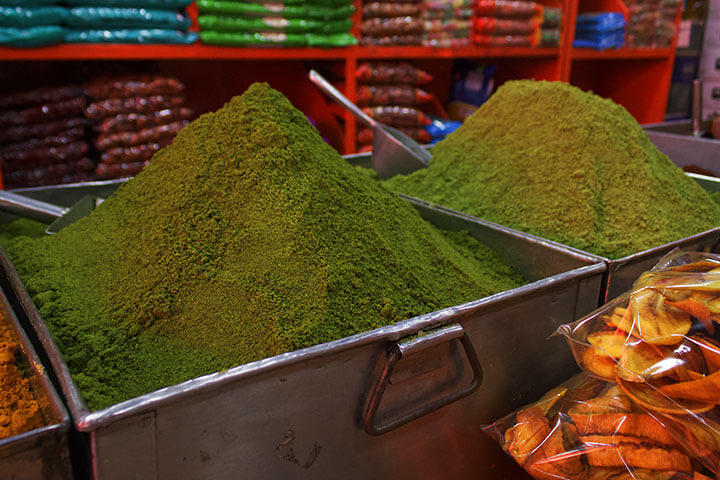
Discover Mole for Yourself!
Mole is a major part of Mexico’s culinary pride and national identity. If you are in the area of San Pedro Atocpan next October, check out the Feria Nacional del Mole for an expansive taste of what you’ve been missing.
If you are unable to make it all the way to Mexico, head over to a local Mexican food festival or, if you’re lucky, a festival like Feria de los Moles, held in California. We hope to see more authentic mole dishes migrate north, bringing with them an authentic taste of Mexico’s culture and history.

